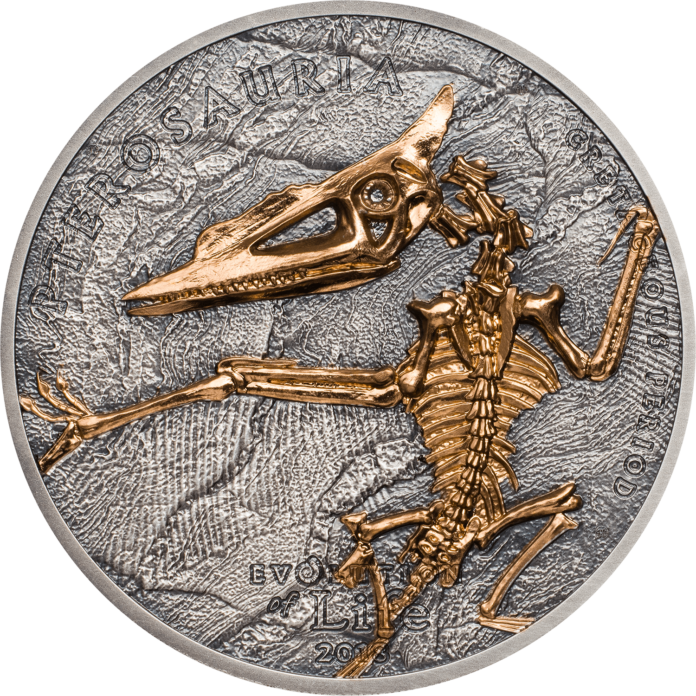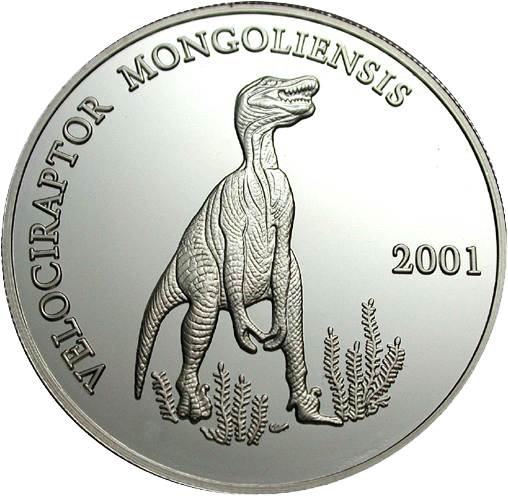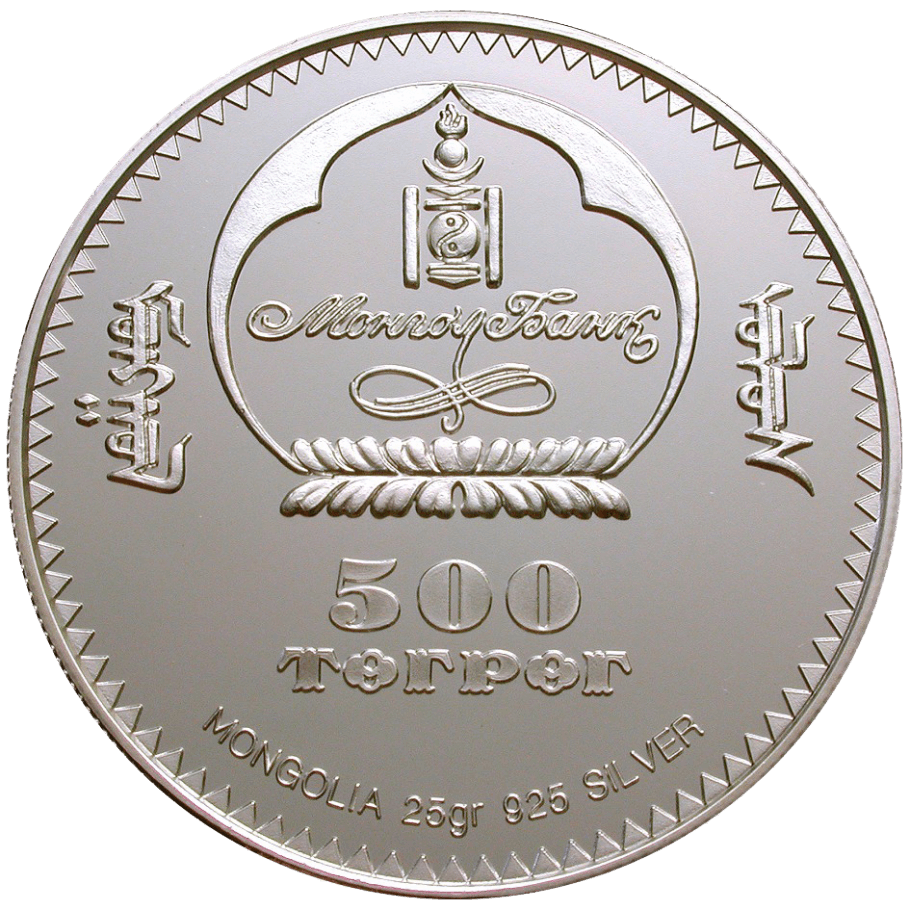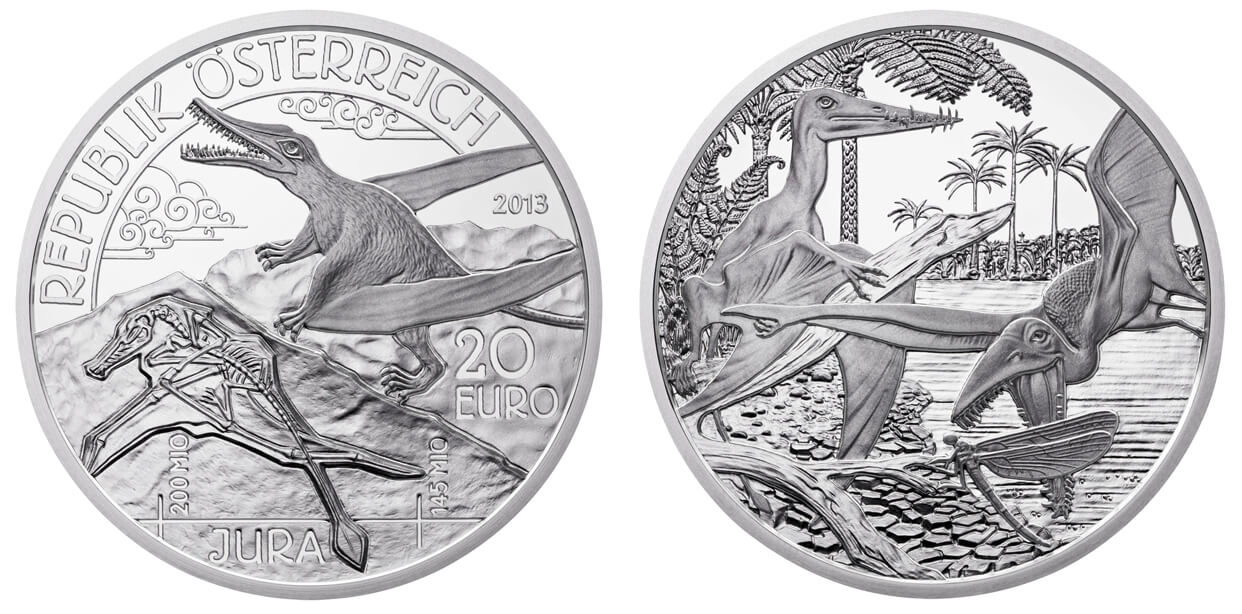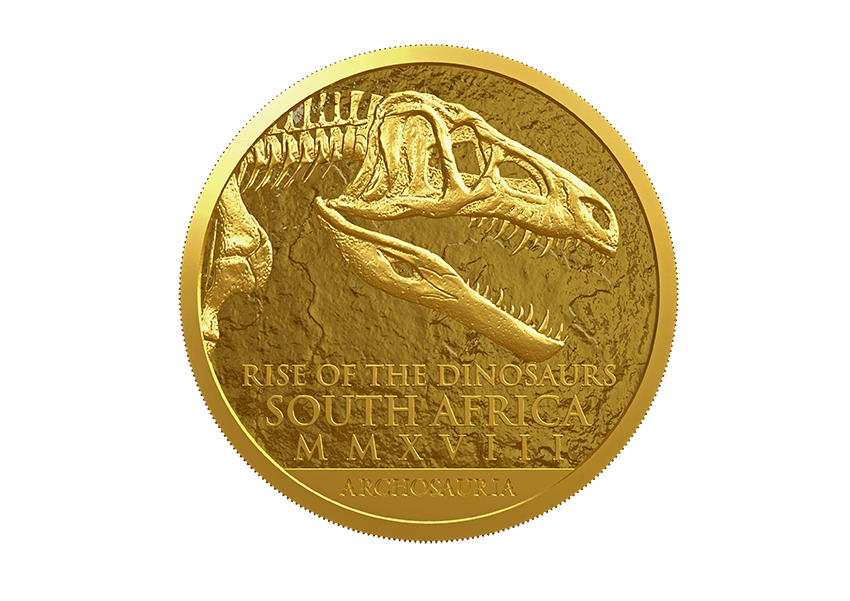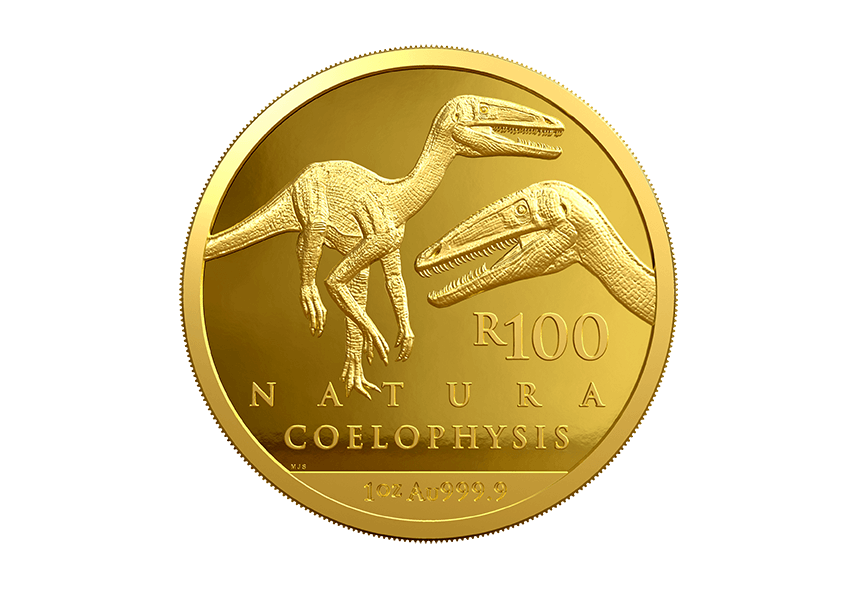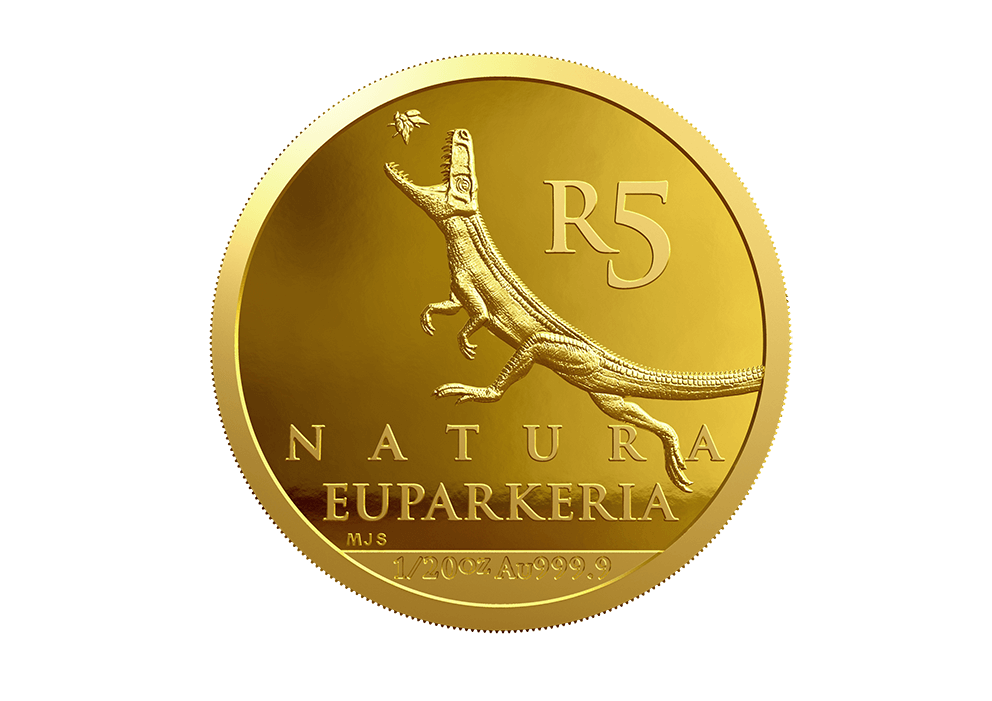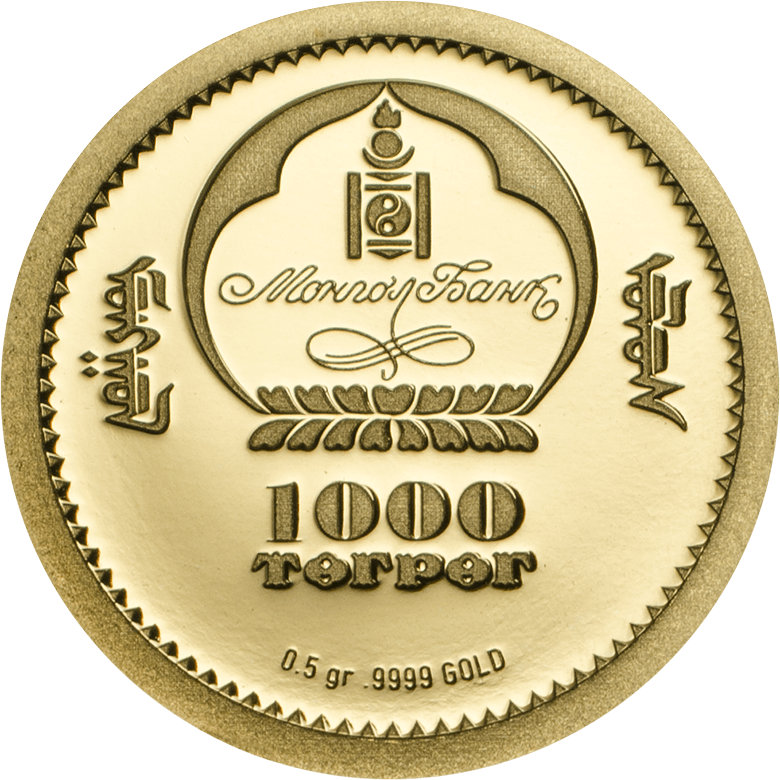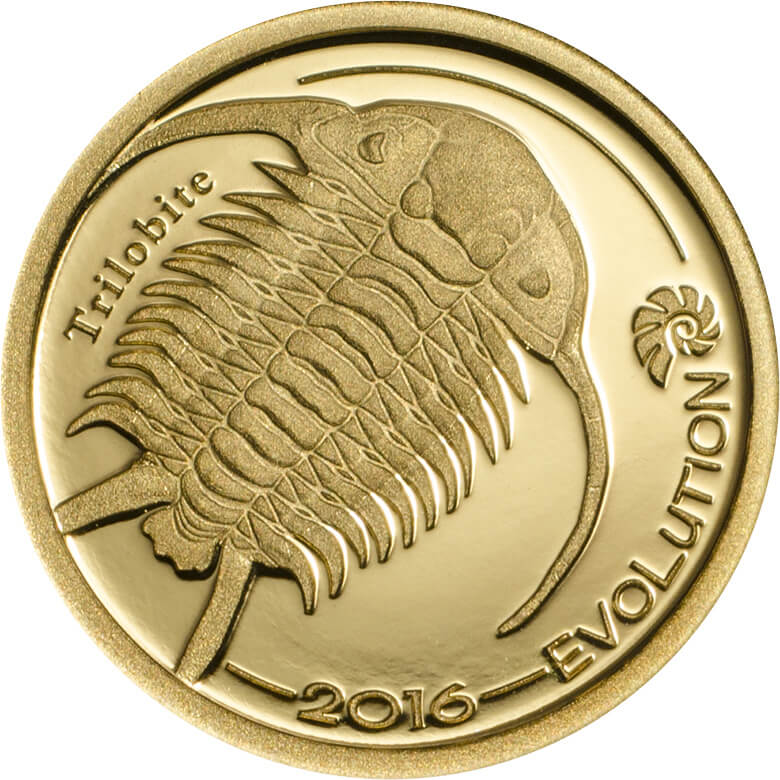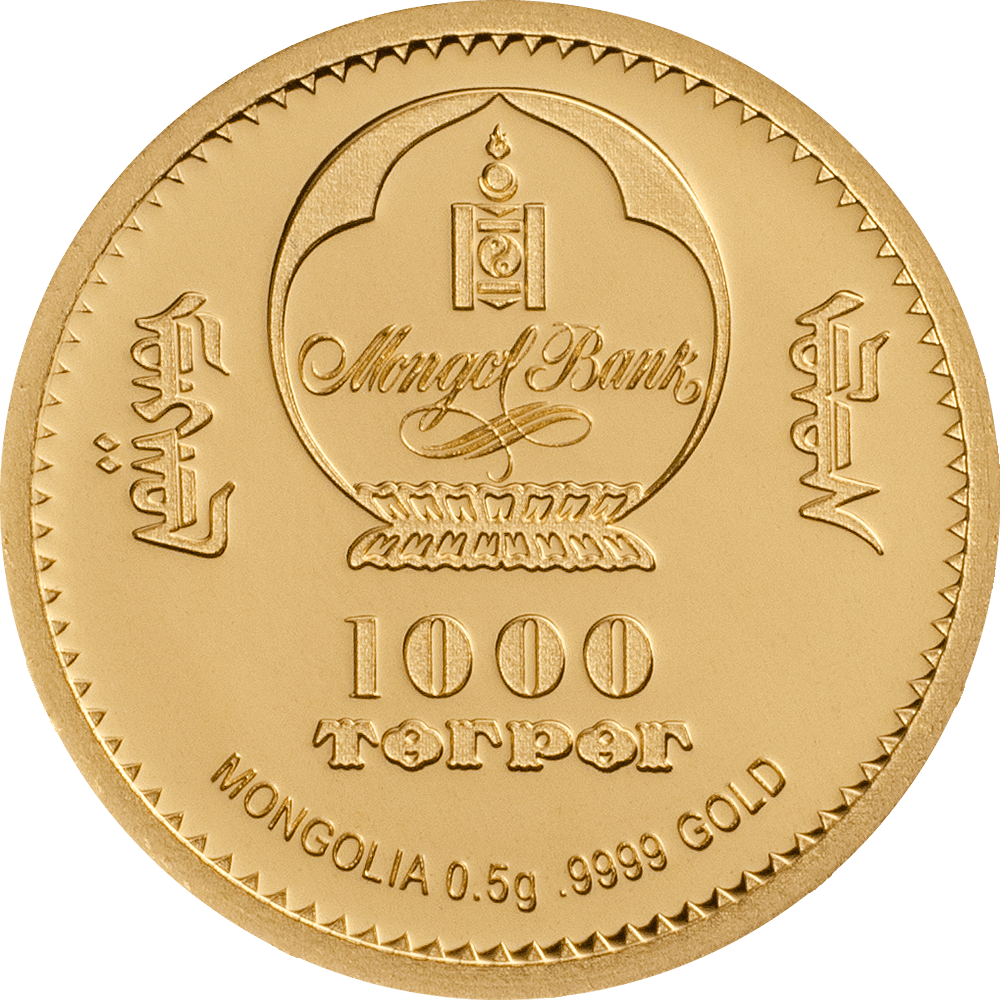Do you like old movies? If you do, you certainly remember “Bringing Up Baby”, the Hollywood comedy with Cary Grant and Katharine Hepburn. Are you wondering how that’s related to fossils? Well, this example perfectly illustrates what the general public thought of those who studied fossils and the high art of palaeontology before 11 June 1993. They were considered to be unworldly scholars. There is a reason why the film culminates in the collapse of the huge skeleton of a Brontosaurus.
However, this attitude changed radically on 11 June 1993. At that time, the film Jurassic Park was released in American movie theatres and immediately conquered the hearts of the audience. Since then, palaeontology has been a mainstream topic, which means that it is not only present in the form of plastic toys in children’s rooms but also on the reverse of coins.
And how dinosaurs are depicted on them says a lot about our attitude towards palaeontology.

The First Dinosaur on a Coin
The credit for having issued the first coin featuring a dinosaur goes to Mongolia. That shouldn’t come as a surprise since the Mongolian Gobi Desert is home to one of the world’s richest fossil sites. And there’s more to it: the fossils found in Mongolia are in such a good condition that it makes other countries turn green with envy. And Mongolia is proud of that. Very proud.
That’s why a 100 Togrog silver coin issued by Mongolia in 1989 – probably the first Mongolian issue intended to be sold to western collectors – features the Nemegtosaurus Mongoliensis. We know of this reptile from the Nemegt Basin in the Gobi Deserst because of an almost complete skull, which was described for the first time in 1971 and can be seen in the Mongolian Natural History Museum in Ulaanbaatar.
You should keep in mind that, until today, the Nemegtosaurus hasn’t really found its way into popular culture. And it is closely connected to Mongolia because the most important fossils for its description were found in Mongolia. Thus, in this case a dinosaur is used as a symbol for its country, which wants to present itself to the western world in the best possible light.
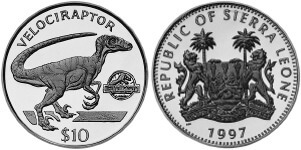
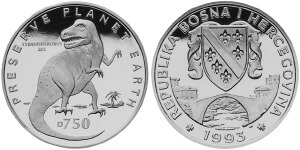
The Dinosaur Hype Caused by Jurassic Park
And, for quite a while, that was all there was to say about dinosaur coins. For a time span of three years, no mint considered it a good idea to pick up this concept. And there was a simple reason for it: dinosaurs weren’t cool. But that changed drastically in the second half of 1993. With the success of Jurassic Park, the dinosaur hype kicked in almost immediately. A wealth of coins featuring dinosaur motifs was produced in the same year. They came from Gibraltar and the Isle of Man, from Equatorial Guinea and the Congo, from Eritrea, Liberia, Guyana and the Sahrawi Democratic Republic. And all these coins depicted the dinosaurs known from the movie: Velociraptor, Brachiosaurus and, of course, the dreaded Tyrannosaurus rex.
The depictions were rather based on the buyers’ ideas than on the state of research. The designs were characterized by their simplicity. Scientific ambitions? Not at all.
What had previously been a limited field of research for palaeontologists became a subject of popular culture. All off a sudden, every schoolboy knew what a Triceratops had looked like. The depictions on coins had to adapt and improve. However, the question of which mint issued coins of which dinosaur didn’t really matter. While Sierra Leone, for example, is an important location regarding finds relating to the history of early humans, fossil finds are rather rare there. Nevertheless, the “Big Four” dinosaurs are depicted on commemorative coins from 2006.
Fossils as Symbols of States
Obviously, the big mints also noticed that dinosaurs sold well. However – just like in the case of cartoon characters, stars of light entertainment and successful sportsmen – this matter wasn’t regarded close enough to a nation’s identity to represent the state on a coin. One had to have a reason for depicting a (sales-promoting) animal of a long gone time on coins …
Once Again, Mongolia
Things were much easier for a state like Mongolia with its many fossil finds. In 2001, a small series was issued presenting two dinosaurs whose fossils had been found on the country’s territory. Motifs like these served as a model and an inspiration for many other nations that were in possession of important fossils, too.
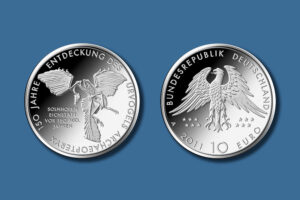
The Archaeopteryx: Germany’s Only Fossil Depicted on a Coin
On 16 June 2011, the German state secretary Werner Gatzer presented the only German coins so far that feature a fossil. More than one year earlier, on 21 January 2010, a jury presided by Berlin artist Heinz Hoyer had selected the winning design by Barbara Ruppel from Krailling. The jury wrote the following about the depiction: “As an example for the Archaeopteryx, the artist chose the specimen from the Natural History Museum of Berlin. He (In 2010, political correctness regarding the use of language wasn’t as common as it is today, masculine pronouns were used for female artists, too. Author’s note) perfectly succeeded in depicting what is special about the fossil, namely the characteristic mixture of features that illustrate the Archaeopteryx’ nature as a connecting element between dinosaurs and birds. That’s why the Archaeopteryx is considered an icon of evolutionary research. Most of the areas in which the ten skeletons that have been found so far and one individual feather were discovered are located in the region of Solnhofen and Eichstädt in Bavaria. The archaeological layers, the Solnhofen Plattenkalk, have an age of 150 million years. The compositional and artistic elegance of the obverse reflects that of the reverse. The clarity of the inscription creates an exciting contrast to the liveliness of the eagle’s feathers.”
The general public came to another opinion about the fossil. They jokingly interpreted this as a before (federal eagle) – after (skeleton) effect.
It’s quite interesting that the German government selected a design that only showed the fossil even though there was also a design proposal featuring a reconstruction of the Archaeopteryx.
Anyway, the Archaeopteryx wasn’t a lasting success, which was probably not due to the motif but to the fact that the German government decided in 2011 to stop issuing circulation commemorative coins in silver and started producing them in cupronickel instead. This change had a significant impact, especially on the demand for commemorative coins at face value.
Prehistoric Life at the Austrian Mint
In the years between 2013 and 2015, the Austrian Mint issued a series bearing the title “Prehistoric Life”. There went much more work into this series than you might think at first glance. The motifs were created in cooperation with the Natural History Museum Vienna, which has the fossils that can be seen on the coins – on the obverse in the lower field on the left – in its collection. The skull of a woolly mammoth, a sabre-toothed tiger and a pterosaurs were accompanied by a reconstruction that was created according to the latest scientific findings and was depicted in as natural an environment as possible. The reverse shows how a typical environment must have looked like in Austria during the Triassic, Cretaceous, Tertiary, Quaternary and the Jurassic.
While the coins of this series can still be purchased at the Austrian Mint at issue price, the two collector boxes were sold much faster. The reason was that both included access to an augmented reality application, which brought the animals that were depicted on the coins to life.
But what’s much more important is that both Germany and Austria recognized the primeval inhabitants of their territory as objects of national identification suitable for being depicted on coins.
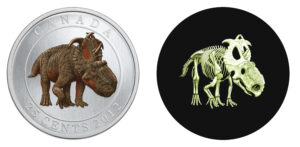
The Glow in the Dark Effect of the Royal Canadian Mint
Every mint that wants to depict a prehistoric animal is faced with the question of whether to choose the skeleton or a reconstruction. The Royal Canadian Mint used a new technology to do both at the same time. In 2012 they issued quarters, coins worth 25 cents made of cupronickel featuring a coloured dinosaur on the reverse. The colour was applied by pad printing. Only when looking at the quarter in the dark, you can see the hidden colour underneath. When doing so, the depiction started to glow and revealed the skeleton under the creature’s skin.
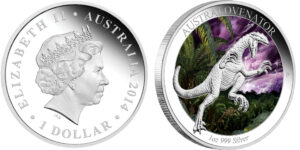
Prehistoric Creatures on Today’s Coins
Nowadays, dinosaurs and other prehistoric creatures have established themselves as legitimate representatives of the nation within whose borders their fossils were found. In 2014, the Perth Mint issued a series of five Australian dinosaurs. The silver coins weighing one ounce illustrate a coloured background inspired by the animals’ natural habitat, while a silver relief depicts the animal itself. The design is framed by a silver rim, which indicates the species’ name at the top and the coin’s weight and fineness at the bottom.
In 2018, the South African Mint created a gold coin series dedicated to the archosaurs of South Africa. The coins have a common obverse, which shows the skull of a Erythrosuchus africanus under the series’ title “Rise of the Dinosaurs”. Tumi Tsehlo, Director of the South African Mint, commented on the reason for issuing this series: “South Africa’s rich fossil heritage has been pivotal to unravelling the history of life on the planet. The fossil finds have turned out to hold a treasure trove of information on life some 200 million years ago. It is a privilege to bring this information to ardent fans of palaeontology on coins that will outlast life on earth.”
To enable every collector to purchase coins of this series, they are available in one ounce and fractionals weighing 1/20 ounce, 1/10 ounce, ¼ ounce and ½ ounce.
Back to Mongolia
Let’s return to Mongolia, where fossils have been symbols of national identification and pride for many decades. Thus, there are currently two series featuring Mongolian fossils. In terms of minting technology and artistic design, CIT Coin Invest AG, which is responsible for Mongolia’s commemorative coins today, is breaking new ground.
The “Evolution of Life” series does not present a reconstruction but a fossil that looks as if it had just been found and cleaned. The background of the design imitates the rough stone surface. The fossil itself is depicted by means of elaborated gilding technique. The extremely accurate application of the gilding that only covers the fossil is a masterpiece of craftsmanship. Even the most delicate details of the skeleton can be seen.

In the spring of 2018, the new “Prehistoric Beasts” series was issued, which also focuses on fossils that were found in Mongolia. It shows the skeleton of a Velociraptor while running on a Red Rock Finish surface that resembles sandy rocks.
Remains of Velociraptors have only been found in Mongolia and Inner Mongolia so far. The fossils are considered cultural heritage. Only one of them was allowed to leave the country once.
And so we have come full circle. Palaeolithic creatures started their journey on Mongolian coins as symbols of national identity and became popular coin motifs thanks to Jurassic Park. After the enormous dinosaur boom in the 90s, dinosaurs and fossils have become legitimate objects of identification once again, and many nations are proud of their connection to these objects. And this can certainly tell us something about the role palaeontology plays in our society today.
Falls Sie diesen Artikel auf Deutsch lesen möchten, finden Sie ihn im MünzenMarkt von Oktober 2018. Sie können das PDF gratis hier herunterladen.
You can look for dinosaur issues in our new database Cosmos of Collectibles. And don’t forget: new issues are being added constantly!
You can find more items in the CoinsWeekly archive.
Do you remember the thrill when watching Jurassic Park? Here is the T Rex attack scene if you can still watch it:
And a more scientific and educational version are the top 5 dinosaurs moments gathered by BBC Earth:



